Whether you know him as Bahamut, the Grand Master of Flowers, the Grandfather of Dragons, The Justice Bringer, or The Platinum Dragon, Bahamut is one of the most notable characters in all of DnD’s expanded lore. As a gargantuan platinum dragon, Bahamut’s appearance will leave an impact on any party that comes to face him.
At the same time, his status as a lesser deity also makes him a prime candidate as the patron of many Clerics and Paladins. With his storied lineage in the system, however, there are many details Dungeon Masters have to get right before including him in a campaign, so here is everything you need to know about the Platinum Dragon. Let’s kick off our Bahamut 5e Guide by looking at some at some key information about Bahamut you need to know.
Key Info Up Front
- Full Name: Bahamut
- Pantheons: Draconic, Untheric, Faerûnian
- Known Aliases: Fizban the Fabulous, Marduk, Xymor
- Alignment: Lawful Good
- Domains: Life, War
Bahamut History in DnD
Bahamut has been featured in every edition of DnD, starting with an appearance in the Greyhawk setting first published in 1975. In his first appearance, he was known as the Dragon King or Platinum Dragon and did not yet have the name Bahamut.
He would not get that name until the Monster Manual for Advanced Dungeons & Dragons was released in 1977. Following that, he was labeled as a lesser god in the book Deities & Demigods, published in 1980, with his role in the multiverse explained in 1987’s Manual of the Planes.
With that, Bahamut’s personality and unique role within the power structures of the DnD multiverse were mainly constructed for the designers to begin expanding upon.
Aspects of Bahamut’s followers and ruling as a lesser deity were expanded in the second edition of Advanced Dungeons & Dragons in books like Monster Mythology, Cult of the Dragon, and On Hallowed Ground.
This expansion brought Bahamut to nearly every official campaign setting in the game, securing his status as a staple for the game.
Moving on from the second edition of Advanced Dungeons and Dragons, Bahamut’s details did not change much. He received explanations regarding his followers, priesthood, and some of his adventures in books like Defenders of the Faith from 2000, Complete Divine in 2004, and Draconomicon: Metallic Dragons in 2009.
Most recently, his known alias Fizban the Fabulous was used as the author of fifth edition’s Fizban’s Treasury of Dragons supplement.
Bahamut Overview
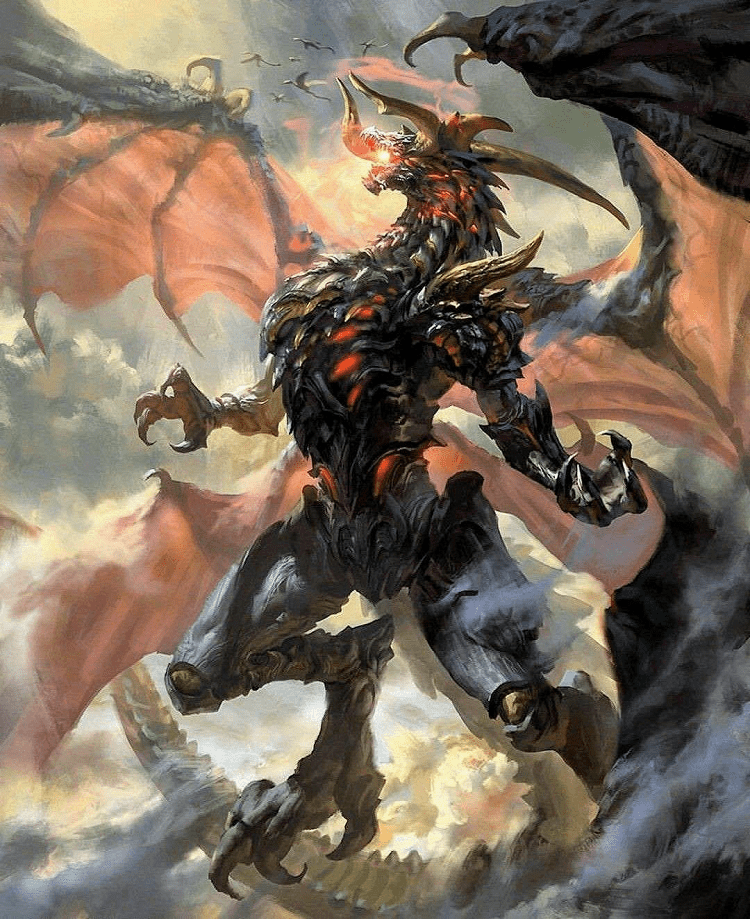
Bahamut’s exact place in the universe is debated by scholars and sages of the Forgotten Realms. Bahamut was created alongside the other original dragons and is believed by many to be a lesser deity.
However, others have debated that Bahamut is an aspect of another, more powerful deity or that he is not quite a deity because his power is tied to the mortal planes rather than an extraplanar dimension like most other deities.
Regardless of his origins, Bahamut quickly became a powerful force among dragons and built a devoted following of good metallic dragons. Gold dragons, in particular, were drawn to him, believing that he was once a gold dragon but had ascended to a unique form by transcending through building his power.
The First World
While Bahamut’s exact origins are debated, every possible story acknowledges that he has an innate tie to Tiamat, the queen of chromatic dragons. When they were first created in the chaos at the universe’s genesis, they combined their power to create what is known as the First World and populated it with dragons.
After creating this initial plane of existence, other deities fought the dragons to claim it for themselves, forcing Bahamut to flee and imprisoning Tiamat.
While Bahamut was outlawed, he took on the appearance of various aspects that he used to travel the mortal realms. During his travels, he sought to learn as much about the new world that he was witnessing as possible, including the numerous mortal races that appeared and began worshipping the gods that had overthrown him.
Bahamut also used the opportunity to keep an eye on his fellow dragons and stoke the flames of worship in his name.
Dragons were established as an influential and revered race across the planes many years later. They inspired various followers and took up religions to the most powerful individuals of each type, including the legends of Bahamut, which split the gold dragon population.
This led to an unprecedented period of religious discrimination among the dragons. While the conflict never turned to violence on a grander scale, the followers of Tiamat and Bahamut quickly began fighting one another in what is now known as the Dragonfall War.
After the Dragonfall War waged for some time, a new pantheon called the Untheric Pantheon appeared, and Bahamut took the alias of Marduk and entered it as one of its gods.
This allowed Bahamut to battle Tiamat directly, eventually forcing him to sacrifice his divine power to save the God-King Gilgeam from a surprise attack by Tiamat.
Coming to the god’s defense weekend, Bahamut so much that he was stripped of his divinity and instead became a celestial paragon that ruled over celestial creatures but had no greater power over the planes of existence.
Bahamut’s Return
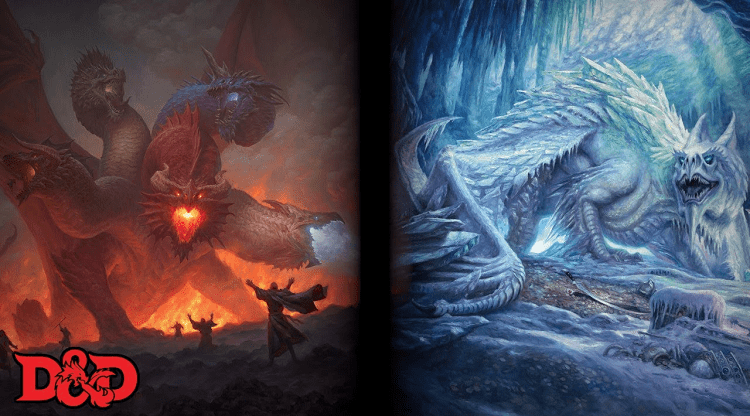
In this state, Bahamut lost most of his worshippers, causing his power to wane further. However, he still wanted to do good and returned to wandering around the mortal realms to right wrongs and help those in need whenever he could.
This made tales of his mortal aliases spread across the mortal realms, giving them new power and solidifying them as legends in their own right.
That was until a group of heroes discovered a powerful artifact of Bahamut’s known as the Tree-Gem, which renewed worship in Bahamut’s name. As the religious efforts in his name grew, so did his power, allowing him to transcend to lesser deity status once again.
The first goal he set his eyes to upon regaining his power was to renew the war effort against Tiamat. He gave devout followers the ability to become Dragonborn in his name, sparking a new war amongst the mortals between the chosen of the two dragons.
However, the war has yet to end and has instead continued to be fought, claiming countless lives over centuries. But, Bahamut could claim a seat in the Faerûnian pantheon after helping save the gods Torm and Tyr when their home was attacked by a powerful force of demons led by the balor lord Axithar.
Now, Bahamut continues to lead his worshippers to right the wrongs of the mortal realms and combat the efforts of Tiamat and her followers in a seemingly never-ending war.
Bahamut Stats
While Bahamut has yet to receive an official stat block for 5e, Fizban’s Treasury of Dragons does feature a stat block for the Aspect of Bahamut on page 164. This monster represents the will of Bahamut sent down to help a devoted worshipper or to carry out the god’s will in some other way.
I wish that Wizards of the Coast will eventually give us an official stat block for Bahamut, but the Aspect works well enough for most situations.
The Aspect of Bahamut does make one wonder just how mighty Bahamut himself must be, as it carries a challenge rating of 30 while only holding a portion of the Platinum Dragon’s full power.
He also has an armor class of 23, a whopping 585 hit points, a speed of 60 feet, a burrow of 60 feet, a fly of 120 feet, and a swim of 60 feet.
An Aspect of Bahamut also is powerful across all Attributes. His Strenght and Charisma are both 30, his Constitution is not far behind with a 29, his Wisdom is 28, his Intelligence 25, and Dexterity is his “dump stat” with a strong 18.
These also carry over into absurd saving throws, with Con getting a +18, Int a +16, Wis a +18, and Cha a +19. He also comes with truesight spell within 120 feet of him and a passive Perception of 28, so nothing can sneak up on him even if he isn’t paying attention.
The power of an Aspect of Bahamut is also on clear display in his damage and condition immunities. He is immune to acid, cold, fire, lightning, radiant, and nonmagical attacks. Players also cannot afflict him with the charmed, deafened, frightened, paralyzed, or stunned conditions, so they might as well not even try.
The Aspect of Bahamut also doesn’t have to be a gargantuan platinum dragon and can instead be one of his various aliases. I have plans to have a party run into Bahamut soon in the future as an old man that is ready to punish them severely if they end up trying to cross him with these tremendous stats.
Features
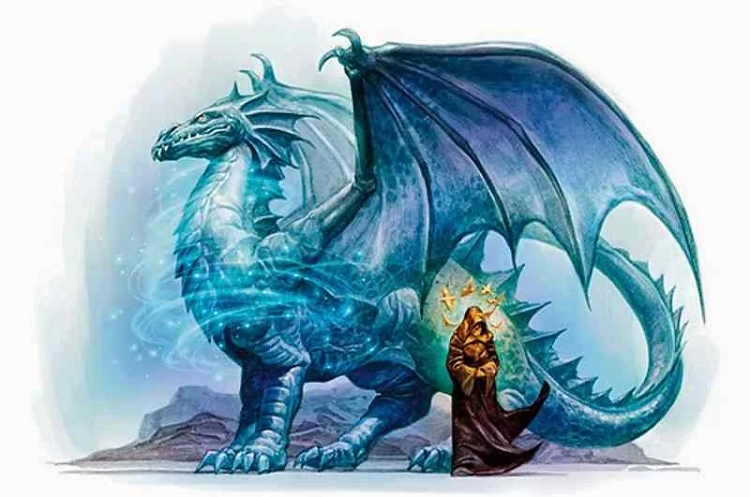
The Aspect of Bahamut comes with two strong features that make him a foe to be feared. The first is the standard Legendary Resistances that every legendary creature in 5e gets.
The Aspect comes with five of them each day, allowing him to choose to succeed on a saving throw even if it failed the roll to do so. The second, however, is much more exciting and intimidating.
It is called Platinum Brilliance and can be used once the Aspect takes a short or long rest. It triggers when he is lowered to zero hit points and prevents him from dying by returning him to 500.
When this happens, he also recharges his Breath Weapon action, gains a use of Legendary Resistance, and gets access to his Mythic Actions that can be used like Legendary Actions.
I love the Platinum Brilliance feature because it allows him to effectively play like a boss in a video game that has two phases. It is also a good way to make him not be as strong if you want, as you can easily cut out the feature to make it slightly easier for your party to tackle.
Bahamut Abilities
Again, since there is no official stat block for Bahamut himself, I will use the Aspect of Bahamut here, which still offers plenty of options while in combat for an unforgettable encounter.
Actions
Multiattack
This action allows the Aspect to make three attacks on a single turn. When it is used, the Aspect of Bahamut makes one Bite, Claw, and Tail attack, detailed below.
Bite
This attack comes with a +19 to hit and a reach of 20 feet, making it a viable way to keep players at bay from the front of the Aspect. On a successful hit, the Aspect’s bite deals 2d12 + 10 piercing damage alongside 4d10 additional Force damage.
Claw
The Aspect’s Claw attack is a debilitating option for crowd control against a party or other creature smaller than Huge. It comes with a +19 to hit and has a solid reach of 15 feet.
If the hit is successful, it only deals 2d10 + 10 piercing damage, but it also grapples the creature with an escape DC of 20. This attack seems great to me to help disrupt the party’s attack plan and create great moments of tension during the fight.
Tail
The tail attack allows the Aspect of Bahamut to defend himself from behind in case a sneaky rogue or two is trying to get the drop on him. It comes with a +19 to hit and a reach of 15 feet. When it hits, it deals out 2d12 + 10 bludgeoning damage while also knocking the target prone unless they pass a DC 27 Strength saving throw.
Breath Weapon
The Breath Weapon action recharges with a roll of 5 or 6 and allows the Aspect of Bahamut to use one of these options:
- Exalting Breath: This breath weapon allows the Aspect of Bahamut to heal its allies that it wants to in a 300-foot cone. Creatures it chooses in the cone heal 12d10 hit points, while creatures it chooses that have been dead for less than an hour are revived with all hit points.
- Platinum Breath: This breath weapon is an attack that affects a 300-foot cone. All creatures in that area have to pass a Dexterity saving throw with a DC of 26, taking 12d10 radiant damage on a failed save and only half the damage if they pass.
Bonus Actions
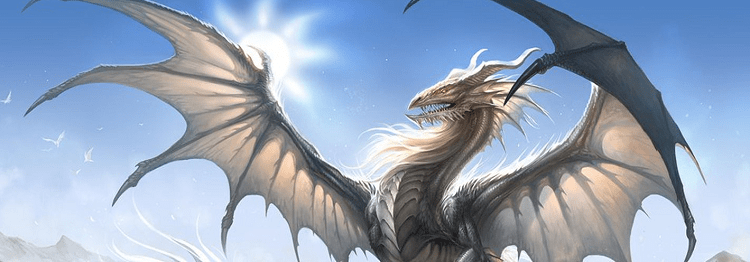
Change Shape
This action allows the Aspect of Bahamut to use its bonus action to turn into any humanoid or beast in all of 5e. While he is changed, none of his stats are different other than his size. He is only forced to come out of the transformation when his hit points hit zero or if he uses another bonus action to change it again.
Legendary Actions
Legendary actions are powerful actions that can be taken at the end of another creature’s turn in the battle. The Aspect of Bahamut can use three legendary actions during each round of combat, but only one can be used simultaneously.
He normally has two legendary actions but unlocks the two mythic actions below once his Platinum Brilliance feature is triggered.
Attack
This legendary action allows the Aspect of Bahamut to make a free Claw or Tail attack using their descriptions above.
Furious Bite
This legendary action costs two uses and allows him to use a Bite attack using the description above. If the bite successfully hits a target, they have to make a Wisdom saving through with a DC of 27. If they fail, they are frightened of the Aspect until the end of the target’s next turn.
Mythic Actions
These actions can only be used as legendary actions in the hour following the activation of the Aspect of Bahamut’s Platinum Brilliance feature above.
Celestial Shield
This action costs two legendary action uses and causes seven spectral ancient gold dragons to appear and defend him. This effect gives him 77 temporary hit points until his next turn starts.
Celestial Lances
This action costs all three legendary action uses. When this action is used, it causes four lances of magical force to appear in the sky and fall at four points around the battlefield within 150 feet of him.
When the lances fall, all creatures within a 20-foot radius and 100-foot high cylinder have to make a Dexterity saving throw with a DC of 27. If they fail, they take 7d6 force damage.
Playing Bahamut
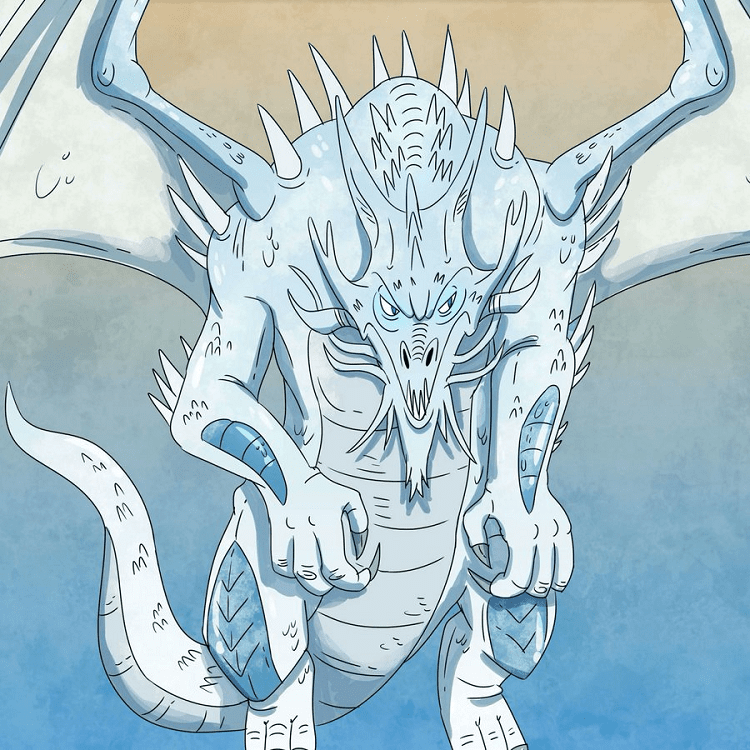
Roleplaying
If you include Bahamut in your campaign, there are several ways to approach roleplaying him in the world. Since it is so rare that he appears in his real dragon-form, I recommend having him mostly appear to your players as one of his mortal aliases.
This can work exceptionally well to make him not seem like the all-powerful dragon god he is.
I’ve used this approach before, and it was a lot of fun. It allowed me to introduce an exciting and more light-hearted character to the campaign, while having him reveal his true identity was a great twist for later on.
While roleplaying him in this form, I took an approach similar to Yoda in The Empire Strikes Back in that he acted weird and sporadic at first until his true nature was revealed to the party.
With Bahamut operating as a deity of justice, you should also prioritize performing good deeds. He should also try to oppose Tiamat as much as possible, such as getting the party to help him in his endless war.
If your party starts working with Bahamut, they should also receive many rewards, whether boons or magical items, in exchange for their devotion.
You may also have to roleplay Bahamut as the patron deity of a Cleric, Paladin, or possibly even a Warlock in your party.
When doing this, you should ensure that the player adheres to the tenets of Bahamut’s religion, such as justice, good, and helping those in need. If they worship Bahamut, they should also revere good metallic dragons, especially if they are golden, silver, or brass.
Combat
If your party crosses Bahamut, they will likely have to face the Aspect of Bahamut rather than Bahamut himself. Because of how high his intelligence is, he should approach combat and the threats in front of him incredibly smartly.
Roleplaying this can be a challenge of making him a difficult and memorable combat encounter as he deserves without just making it annoying for your players.
However, I also recommend trying to do everything possible to keep your players from facing the Aspect of Bahamut in combat if they are unprepared for it.
With a challenge rating of 30 only, a fully leveled party with plenty of powerful magical items and boons should try to take him on. Otherwise, it will be a quick and likely unenjoyable experience for the entire party.
If the party does end up facing the Aspect of Bahamut, he should be played to be extremely smart. This means targeting some of the party’s most vulnerable members, primarily if a wizard or ranger deals a lot of damage from a distance.
Beyond that, you should play him according to the party he is facing to ensure he is a challenging fight. Because of Bahamut’s dedication to punishing those he sees as deserving of it and his confidence in his capabilities, it would not make sense for him to ever run away from an encounter or fight.
He faced off against the eventual gods of the world for the First World, he would never give up against a group of mere mortals.
If your party is determined to face off against Bahamut for some reason, but they are a bit too low level, or you want to make it a bit more exciting, you can also include Tiamat.
Either Tiamat can give them some magical items or boons to help them along, or you can use the Aspect of Tiamat from Fizban’s Treasury of Dragons on page 166 to fight alongside the party help them for a cinematic encounter.
FAQs
Question: Is Bahamut Stronger than Tiamat?
Answer: The strength of both dragons frequently changes throughout the DnD timeline, but they tend to be equal in power since they act as two opposing forces that are identical but opposites to one another.
Question: Do Dragonborns Worship Bahamut?
Answer: Yes, it would be very common for a good Dragonborn to worship Bahamut and try to live by his tenets.
Question: What is the Holy Symbol of Bahamut?
Answer: Bahamut’s holy symbol is a shield with the head of a silver dragon, and his holy colors are blue, white, and silver. So, if you are a character that follows Bahamut, you should have his silver head crested on your shield, cape, or piece of armor to represent your faith.
- Steel Defender 5e Guide - September 5, 2022
- Harengon 5e Guide - August 24, 2022
- Shambling Mound 5e Guide: The Most Terrifying Plant - August 21, 2022

